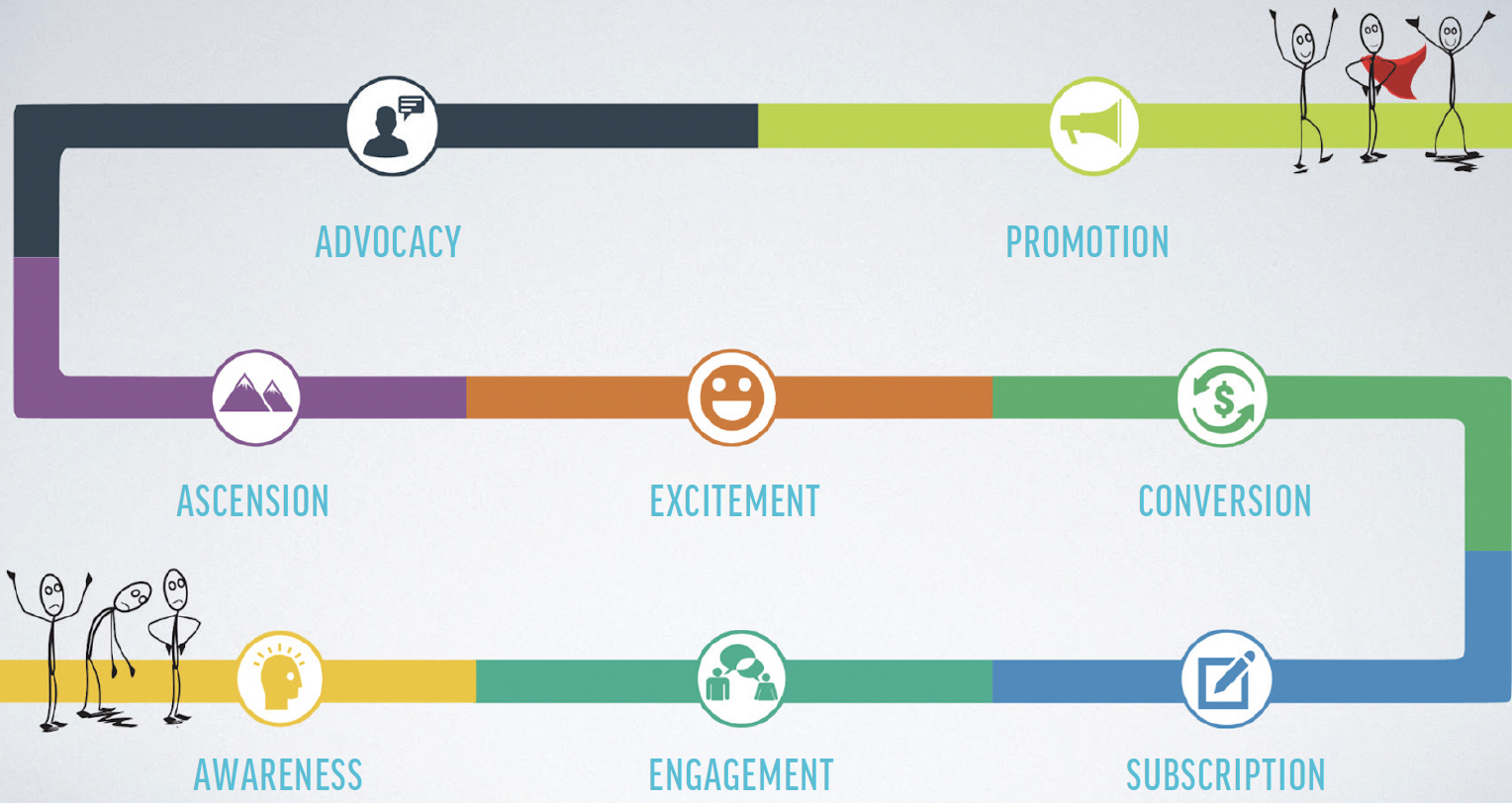

For many years, the prevailing belief has been that attracting traffic is a key competitive advantage. Contrary to popular opinion, the true secret to success is the ability to convert cold traffic profitably on a large scale. We refer to this essential growth mechanism as the customer value journey (Figure).

Figure. The customer value journey.
As refractive surgeons, your objectives go beyond performing successful surgeries. An additional goal is to steer patients on a transformative path by guiding them from their initial discovery of your services to becoming enthusiastic advocates of your practice. This year, focus on comprehensively understanding and refining the customer value journey.
Understanding the Customer Value Journey
The customer value journey is a comprehensive framework that outlines the stages of patient engagement with your practice. The process starts with the patient’s initial awareness of your services and culminates in their active promotion of your practice. Each step provides distinct opportunities for engagement and relationship enhancement.
Awareness. The journey begins with awareness. Prospective patients learn about your practice through digital advertising, your published content, and referrals from patients and optometrists. Your marketing efforts at this stage should target your audience precisely, highlight your unique value, and prompt action.
Engagement. Potential patients interact with your practice. Most important at this stage are your practice’s educational content (both written and video), social media presence, and communication. Engagement requires cultivating a relationship and building trust.
Subscription. Motivate interested individuals to engage further with your practice by taking a self-assessment test, downloading your guides, or following you on social media. This phase is about securing their contact details and transforming them into warm leads with consistent follow-up, often in return for a free preliminary evaluation.
Conversion. The goal is to transform prospects into patients. Introduce compelling offers such as free initial consultations to demonstrate value and encourage a preliminary commitment.
Excitement. Providing exceptional care and service gives patients confidence in their decisions. Your focus is on exceeding their expectations and reinforcing their perceptions of the value of your services.
Ascension. Satisfied patients often consider additional services. Propose complementary upgrades to their initial treatment. This phase is about deepening your relationship with the patient and enhancing their lifetime value to your practice.
Advocacy. Happy patients share their positive experiences. Encourage them to write reviews or post their stories online. These organic endorsements are powerful testimonials for your practice.
Promotion. The goal is for advocates to become active promoters. Implement referral programs or patient ambassador initiatives. Use satisfied patients and optometrists to draw in new patients.
Implementing the Journey in Your Practice
A strategic and patient-centric approach is essential to incorporating the customer value journey into your refractive surgery practice.
Step No. 1: Analyze the patient journey. Begin by examining the current pathway your patients take. Pinpoint any shortcomings and identify areas for improvement at each stage of their journey.
Step No. 2: Develop targeted marketing strategies. Tailor your marketing initiatives to resonate with each stage of the journey. Employ patient success stories, informative content, and specific offers to attract and convert potential patients.
Step No. 3: Leverage technology. Implement customer relationship management systems and marketing automation tools. These technologies are invaluable for streamlining communication processes and keeping track of patient interactions.
Step No. 4: Train your team. Every member of your staff must understand the significance of each stage of the customer value journey and be capable of delivering outstanding patient experiences. Training should focus on patient engagement, communication skills, and the recognition of individual patient needs.
Step No. 5: Measure and iterate. Evaluate the effectiveness of your strategies and tools at every stage. Ongoing assessment allows you to make necessary modifications.
Conclusion
Understanding and effectively implementing the customer value journey in your refractive surgery practice is more than a strategy for revenue growth. It demonstrates your dedication to superior patient care and satisfaction. In addition to attracting patients, the journey can cultivate a loyal community that grows through their advocacy and support.
The journey intertwines patient experience with quality of care. Commitment can help your practice flourish in an environment where the patient experience is as important as the outcomes of surgical procedures.


